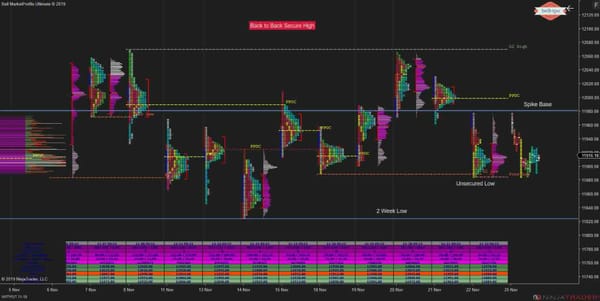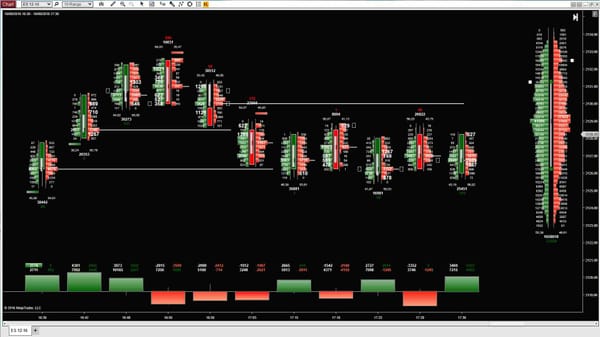NVIDIA Earnings Call Analysis: August 2024
NVIDIA's earnings call highlights AI dominance and growth, but margin concerns and market volatility led to a sharp decline in tech stocks.

On Aug 26th 2024, NVIDIA's series of earnings conference calls came with several substantive updates that peg this company's future, driven by AI, accelerated computing, and its new Blackwell architecture. Key takeaways include the following:
Key Takeaways
Introduction to Blackwell Architecture
- With the next architecture called Blackwell, NVIDIA promised another quantum leap in AI infrastructure, estimated to be up to 5x more AI throughput in power-limited data centers compared to Hopper.
- The architecture features liquid cooling, bettering TCO, allowing for NVLink connectivity of as many as 144 GPUs within a single system, making it perfect for large language model inference.
Strong growth in data centers
- NVIDIA believes that the data center business is seen to grow by a mjor margin with adoption driven by both Hopper and the upcoming architecture Blackwell.
- The company expected further growth in the second half of the year, continuing through 2024, to which Blackwell would be the main contributor.
Geographical Market Performance
- This reflects strong growth in Asian markets, primarily China, while the U.S. market declined sequentially due to supply chain dynamics.
- Despite these fluctuations, overall revenue growth is expected to remain strong.
Approach for Supply Chain and Integration Strategy
- NVIDIA is focused on scaling its AI offerings, using increased vertical integration and partnership with the supply chain to manage heightened complexity in AI infrastructure.
- Its strategy also provides for a "one-stop AI factory solution from chips to software to speed deployment and scaling.
Expansion in Enterprise AI
- It's extending an enterprise AI platform that will include tools such as Nemo, NIMS, and AI foundry to facilitate business efforts tailoring and deploying AI models.
- It puts the price in a competitive place, showing the company's position to grow its software revenue, which is anticipated to obtain a $2 billion run rate by year's end.
Positive Future Outlook
- NVIDIA remains optimistic about its future growth, which it expects will continue to be driven by sustained innovation in AI and accelerated computing.
- It is, in particular, the Blackwell architecture that is expected to drive this growth and underpin company leadership in AI-driven solutions.
1. Blackwell Architecture: A Game-Changer to AI
It is expected to revolutionize the AI world with its launching in the upcoming year. Project Blackwell will provide three to five times more AI throughput in power-limited data centers when compared to the existing Hopper architecture. Many innovations like liquid cooling have pushed the performance up much higher while improving the TCO, carrying up to 144 GPUs under one roof, connected via NVlink for the very first time in one system. The low latency, high throughput, and large language model inference substantiated this architecture to set a new benchmark in AI infrastructure.
2. Growth in Data Center Business
NVIDIA anticipates its data center business to increase significantly with the use of its newest Blackwell architecture by distributors, combined with continued success of the Hopper architecture. Revenue from both Hopper and Blackwell is expected to grow in the second half of this year and well into the next. While ramping in Q4, the Blackwell architecture is expected to be a strong contributor in this growth, and continued demand in 2024 and beyond.
3. Geographical Market Dynamics
The earnings call also showed clearly the geographic dynamics of the markets, with strong performances shown in Asian markets, including China, which for the most part saw substantial sequential growth. This was in contrast to the decline seen in the U.S. market, blamed on fluctuations in the supply chain and where products get invoiced rather than their final destination. These, however, do not dampen the overall revenue trajectory for NVIDIA, since it still is continuing to grow and likely will grow further in the following quarters.
4. Supply chain challenges and opportunities in integration
While the revealed complexity of AI models continues to increase, NVIDIA scales its AI offerings to large appetites for the next industrial revolution. Vertical integrations and deeper partnerships across the supply chain manage increased complexity with advanced packaging and AI infrastructure. That leaves NVIDIA uniquely placed in the market for providing the entire AI factory-from chips to software-enabling rapid deployment of models and scaling.
5. NVIDIA Expands its Enterprise AI and Software
NVIDIA also makes brisk business in the enterprise AI space, where its AI enterprise platform is composed of likes such as Nemo, NIMS, and AI foundry. Such tools enable businesses to bring in customization of AI models with efficient deployment. Currently, a pricing model at $4,500 per year per GPU for the platform grasps a strong value proposition for enterprises keen on introducing AI into their operations. That would put the company's software revenue on a $2 billion run rate by the end of the year, as the company stated, reflecting the increasingly important role software is playing in NVIDIA's business model.
6. Future Outlook
Looking to the future, NVIDIA says it is very confident in growth powered by ongoing development of AI and accelerated computing platforms. Blackwell will be a leading driver of this growth, she says, because new possibilities opened by its rich functionality cut across all industries. As generative AI continues to build momentum, NVIDIA stands best positioned to lead the development of AI-driven solutions for the next wave of technology breakthroughs.
Further NVDIA call analysis
Widening Enterprise Adoption
One of the interesting pieces from this call was that NVIDIA's customer base for the H100 GPUs is no longer hyperscalers only. Enterprises are now buying volumes diagonally, which means that NVIDIA's AI technology is expanding across various sectors.
Overwhelming sales growth in the case of the Sovereign Clouds
NVIDIA raised its estimate for sovereign cloud revenue from the high single-digit billions to the low double-digit billions-a pretty sizeable jump of 50% within one quarter. The jacking up indicates how important and in demand the solutions of sovereign clouds are becoming in the AI space.
Full Ecosystem and Vertical Integration
One of the things that came out during the discussion was how NVIDIA is in charge of the whole ecosystem that constitutes the AI infrastructure. With the Blackwell system being nearly entirely made from NVIDIA technology, this means the need for third-party components was at its barest minimum, thus reducing competition with other semiconductor companies such as Intel and AMD. This kind of integration goes a long way in making NVIDIA's offerings very attractive to customers who intend to have easy deployment and optimization of performance.
Apprehensions about the margin compression
There was some worry about a possible margin compression, which many believe is overstated. The small gross margin decline was attributed to the aggressive investments that NVIDIA had made in the AI space. The CFO at NVIDIA claimed it did expect to keep gross margins in the mid-70s for all of the full year despite fluctuations due to new product releases.
Market Reaction and Stock Volatility
Indeed, the after-hours stock market reaction was discussed; NVIDIA's stock took a significant tumble and erased about $200 billion in valuation. This time, the concerns were on margin compression and some slight delay in the product cycle for Blackwell. Still, some participants looked at it as an opportunity to buy into the stock, surmising that the market had overdone it with its short-sighted reaction.
Defensive Tone and Market Sentiment
Some viewed this call as defensive and condescending, which arguably drove negative reactions to the call. The market was technically already softening up, but NVIDIA's earnings call simply added more concern that continued to drive further declines in key support levels.
Outlook on Blackwell and Market Position
Although the Blackwell commentary was considered to be vague, the overall outlook was positive in relation to the market position of NVIDIA. Its broad ecosystem and full-stack approach are viewed as key differentiators that are likely to drive growth further, which will enable it to retain its leading position in the AI industry.
Market Reaction
Indeed, NVIDIA's earnings made a strong case for investors, and the market reacted quite negatively, leading tech-heavy NASDAQ 100 higher at NDX and in the broader S&P 500 at SPX. Both indices saw major declines after an earnings call that signaled concerns about margin compression and some minor delay in Blackwell's product cycle.
While the highly sensitive NASDAQ 100 would suffer more due to the stock movements of such behemoths like NVIDIA, its implications on growth and profitability saw investors reacting more violently.
The more diversified S&P 500 took some damage in sympathy, too, since the broader market weakness partly stemmed from the stock sell-off in NVIDIA. This captures how sensitive the market has been to any signs of slowing momentum in key technology stocks during a period of high volatility and uncertain economy.
Conclusion
NVIDIA's most recent earnings call showed the dominance of this firm in fast-changing AI and accelerated computing markets. It is well-positioned with the introduction of Blackwell architecture and the strong growth of sovereign cloud sales to lead the next wave of innovation in AI infrastructure. It expanded its customer base from hyperscalers to more enterprises because a lot of enterprises needed NVIDIA advanced AI solutions.
The call, however, provided concern for short-term margin compression and a slight delay in product cycles for Blackwell, which contributed to the notable drop in NVIDIA's stock price after hours. Strong ecosystem, full-stack integration, and continuous innovation efforts should continue to keep this leader on top in the AI space. While market sentiment may gyrate week to week, the long-term prospects for Nvidia remain strong, supported by continued growth as it executes on its broad AI platform and builds out enterprise adoption.




